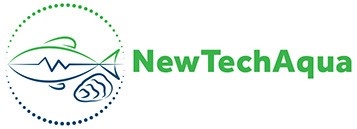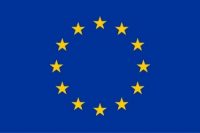
Abstract
The vision of the EU aquaculture industry is to grow substantially in the next decade and to provide annually 4.5 million tons of sustainable food products. To this aim, NewTechAqua intends to expand and diversify EU production of finfish, molluscs and microalgae by developing and validating technologically-advanced, resilient and sustainable new solutions. The organizational approach of NewTechAqua is to group the solutions in 6 different categories: feed, Industry 4.0, sustainable farming, genetics, new species and new products. They will be validated on conventional (Atlantic salmon, rainbow trout, seabass and seabream) and emerging (greater amberjack, meagre, Senegalese sole and grey mullet) finfish species, molluscs (Pacific oyster, mussel) and microalgae. NewTechAqua is structured in 9 WPs. WP1 will conceive, formulate, produce and demonstrate three innovative sets of aquafeeds (pro-health, organic, zero waste). WP2 will establish new AI epidemiological models for enhancing the control of parasite outbreaks in Norwegian and Mediterranean farms. Sustainable aquaculture will be also promoted by advanced model systems and technologies for mollusc and in-land fish farms ecointensification. WP3 will develop innovative breeding programmes to improve performance, robustness and quality of farmed fish, molluscs and microalgae, while WP4 will achieve significant advances in reproduction technology of three emerging fish species. High-quality seafood products and sustainable food processing techniques for valorisation of by-products will be validated. WP6 will develop a set of indicators to monitor and measure progress towards the expected impacts, while market uptake of NewTechAqua results and outputs will be ensured by a detailed exploitation strategy (WP7). Finally, NewTechAqua will achieve well-targeted communication, dissemination and maximum transfer of generated know-how and project new technologies (WP8).
Project details
Unibo Team Leader: Alessio Bonaldo
Unibo involved Department/s:
Dipartimento di Scienze Mediche Veterinarie
Dipartimento di Farmacia e Biotecnologie
Dipartimento di Scienze e Tecnologie Agro-Alimentari
Dipartimento di Scienze Statistiche "Paolo Fortunati"
Coordinator:
ALMA MATER STUDIORUM - Università di Bologna(Italy)
Other Participants:
Aquicultura Balear S.A.U
(Spain)
The Seafood Innovation Cluster As
(Norway)
Hellenic Centre For Marine Research
(Greece)
Università Cà Foscari di VENEZIA
(Italy)
Institut De Recerca I Technologia Agroalimentaries
(Spain)
Rara Avis Biotec, S.L.
(Spain)
Ichthyokalliergeies Argosaronikou Anonymi Etairia
(Greece)
Galaxidi Marine Farm Ae
(Greece)
Università degli Studi di Bari Aldo Moro
(Italy)
Nofima Genetics as
(Norway)
Aquanetix Limited
(United Kingdom)
Cromaris D.D.
(Croatia)
Ifremer-Institut Francais De Recherche Pour L'Exploitation De La Mer
(France)
Irida Ae-Products For Animal Production-Services
(Greece)
Mowi ASA
(Norway)
A.I.A. - Agricola Italiana Alimentare S.P.A.
(Italy)
Greenovate! Europe
(Belgium)
Economia del mare
(Italy)
Universidad De Las Palmas De Gran Canaria - Fundacion Canaria Parque Cientifico Tecnologico
(Spain)
Syndicat Des Selectionneurs Avicoles Et Aquacoles Francais
(France)
Consiglio Nazionale Delle Ricerche
(Italy)
Ministry Of Agriculture, Rural Development And Environment Of Cyprus
(Cyprus)
Centre International De Hautes Etudes Agronomiques Mediterraneennes
(France)
Fédération Européenne des Producteurs Aquacoles
(Belgium)
Il Vigneto Società Agricola a R.L.
(Italy)
Total Eu Contribution: Euro (EUR) 5.990.172,67
Project Duration in months: 48
Start Date:
01/01/2020
End Date:
31/12/2023


